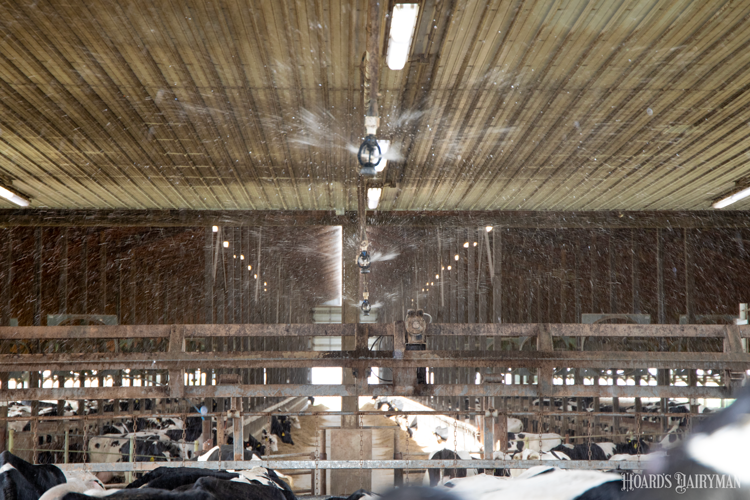
Late gestation is one of the critical points of pregnancy when any positive or negative event that occurs can cause long-term effects on the fetus after birth. For dairy animals, this last trimester of pregnancy that is crucial for developmental plasticity overlaps with the dry period. While the fetus is growing exponentially, organs are maturing, cell differentiation is happening, and cell hierarchy is being established.
“All of these processes are sensitive to temperature,” said University of Wisconsin-Madison assistant professor Jimena LaPorta.
Of course, an in-utero calf relies on the dam for temperature regulation. The dam, in turn, relies on the dairy farmer.
When the cow experiences hot temperatures and is not cooled sufficiently, research has shown that stress affects the developing calf, too. During an Iowa State University Extension webinar, LaPorta discussed what we know about how heat stress affects calves in utero.
Across twelve different experiments, LaPorta said that calves born to heat stressed dams were born, on average, five days earlier. This means they have less time to finish that crucial late-pregnancy development and are lighter at birth, typically by about 10 pounds. Calves remain smaller through the preweaning stage, with those calves consuming less milk replacer and grain and achieving a lower average daily gain. “At 6 to 7 weeks of age, those animals are still going to be smaller,” LaPorta continued.
Her group has also found that calves born to heat stressed dams are shorter at birth — in body length, head circumference, and hip height —and remain smaller at least up to a year old.
Additionally, these calves have compromised innate and adaptive immunity, LaPorta said, with a 10% to 20% reduced ability to absorb immunoglobulins (IgG). Lower circulating IgG levels are seen all the way through the preweaning phase, she noted. At a critical point of life, these calves are less prepared to fight off infection and require more veterinary assistance and treatment.
Limited udder capacity
LaPorta, a lactation physiologist, further dug into how heat stress during late gestation impacts the growing fetus’ mammary gland development. Early development of the udder is critical to future production capacity.
Calves born to heat stressed dams have a smaller udder at birth, with a smaller fat pad and parenchyma, she said. They also have smaller and fewer ductal structures, which will become the lobular structures that are needed for milk production. Further, heat stress leads to fewer mammary epithelial cells in the alveoli and lower expression of estrogen receptors, particularly in puberty. This causes less mammary cell proliferation and thus reduced milk production.
A study that looked at 10 years of data from calves of 400 cows heat stressed during the dry period and 400 cows cooled during the dry period showed that daughters of heat stressed cows made less milk in each of their first three lactations, La Porta said. This was observed in the animals that even made it to those points; daughters of heat stressed dams left the milking herd an average of five months earlier and had, on average, a lifespan that was one year shorter than cows from cooled dams.
“[Heat stress] is a programming effect that lasts for multiple lactations,” LaPorta summarized. Based on the lower milk production, shorter productive life, and higher rearing costs due to inhibited immunity, her group has estimated that heat stress on in-utero calves costs the dairy industry $600 million. That’s on top of the approximate $800 million lost in production from the dams of those calves in the next lactation.
It's not a regional issue, either, she emphasized. No matter how many heat stress days your farm experiences in a year, these impacts are real, so taking measures to cool your dry cows will have long-lasting effects on your herd.








